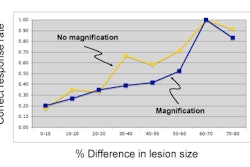Should radiology or the IT department take responsibility for managing PACS in a hospital? It depends on the facility's corporate culture and the level of sophistication of the IT department, an animated "debate" at the 2008 Society for Imaging Informatics in Medicine (SIIM) meeting concluded.
The premise of the argument presented by Dr. Paul J. Chang on behalf of IT department ownership is that PACS technology has become a component of the entire hospital informatics enterprise rather than its own unique entity. In an increasing number of hospital infrastructures, dedicated networks for PACS are unnecessary. Thick-client workstations are facing obsolescence. Virtualization of mass storage is replacing more costly dedicated image storage systems.
Modern healthcare IT should be structured as a matrix, according to Chang, who straddles both worlds as vice chairman of radiology informatics and director of pathology informatics at the University of Chicago Pritzker School of Medicine.
"You don't want to destroy domain expertise, but rather leverage it better. A matrix organization enables the experience of one domain to be adopted by another domain," he contended.
Because PACS is the multimedia component of an electronic health record (EHR), the EHR must be optimized to support radiology workflow. Not only is this a complex undertaking, but it logically fits as the responsibility of the IT department -- as long as the IT department has a global vision and a progressive philosophy, Chang said.
Dr. David Channin, chief of imaging informatics at Northwestern Memorial Hospital and the Feinberg School of Medicine in Chicago, disagreed.
"Radiology has led informatics technology innovation in hospitals and will continue to be the source of informatics leadership in healthcare," Channin said. "Domain expertise must take precedence over IT expertise. Tools don't drive domain innovation."
"If controlled in a central manner, such as a matrix structure, the priorities of a radiology department will be subjected to control by an IT department juggling priorities representing multiple domains in a hospital," he said. "If you don't have budgetary control of your bucket of allocated capital dollars, you have lost control. Your critically needed PACS upgrade will be competing with acquisition of a new laser doodad for OR."
Radiology departments should wield the power they have as cash cows for hospitals, define their IT domain borders, provide access to them with standard interfaces, and demand autonomy, according to Channin. He recommended that radiology departments contract with IT departments for "commodity services" such as networks, virtual operating systems, and data storage.
"As progressive as an IT department may be, it doesn't care about the quality of information that radiologists need," Channin said. "Even if a new capital acquisition is approved in February, you may be told that you can't upgrade XYZ until the department synchronizes something else in August. It is imperative that radiology departments be able to control their own domain."
By Cynthia Keen
AuntMinnie.com contributing writer
June 4, 2008
Related Reading
Software unifies control of multiple informatics applications, June 2, 2008
Communication and prevention are key to minimizing PACS downtime effects, May 19, 2008
Radiology and pathology can benefit with a stronger IT link, May 17, 2008
Wireless LAN-based miniPACS boosts management of portable imaging devices, May 16, 2008
Making PACS work in small imaging centers, May 16, 2008
Copyright © 2008 AuntMinnie.com



















